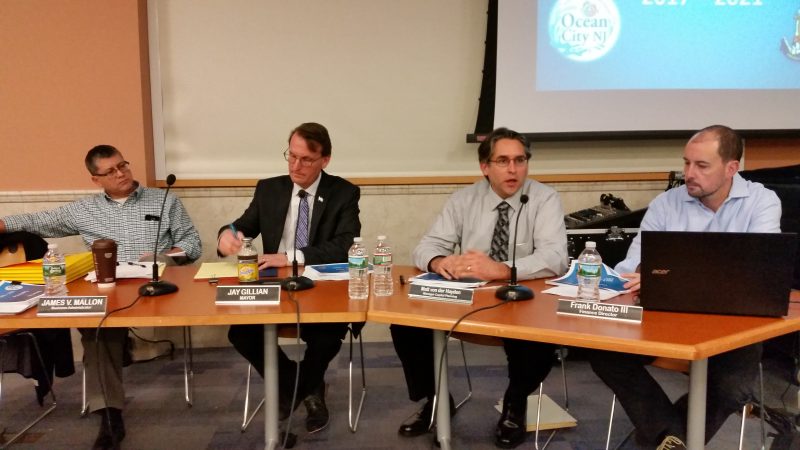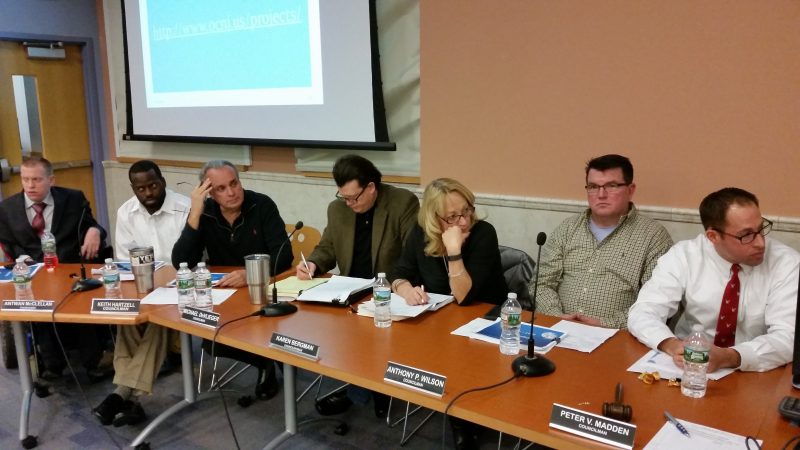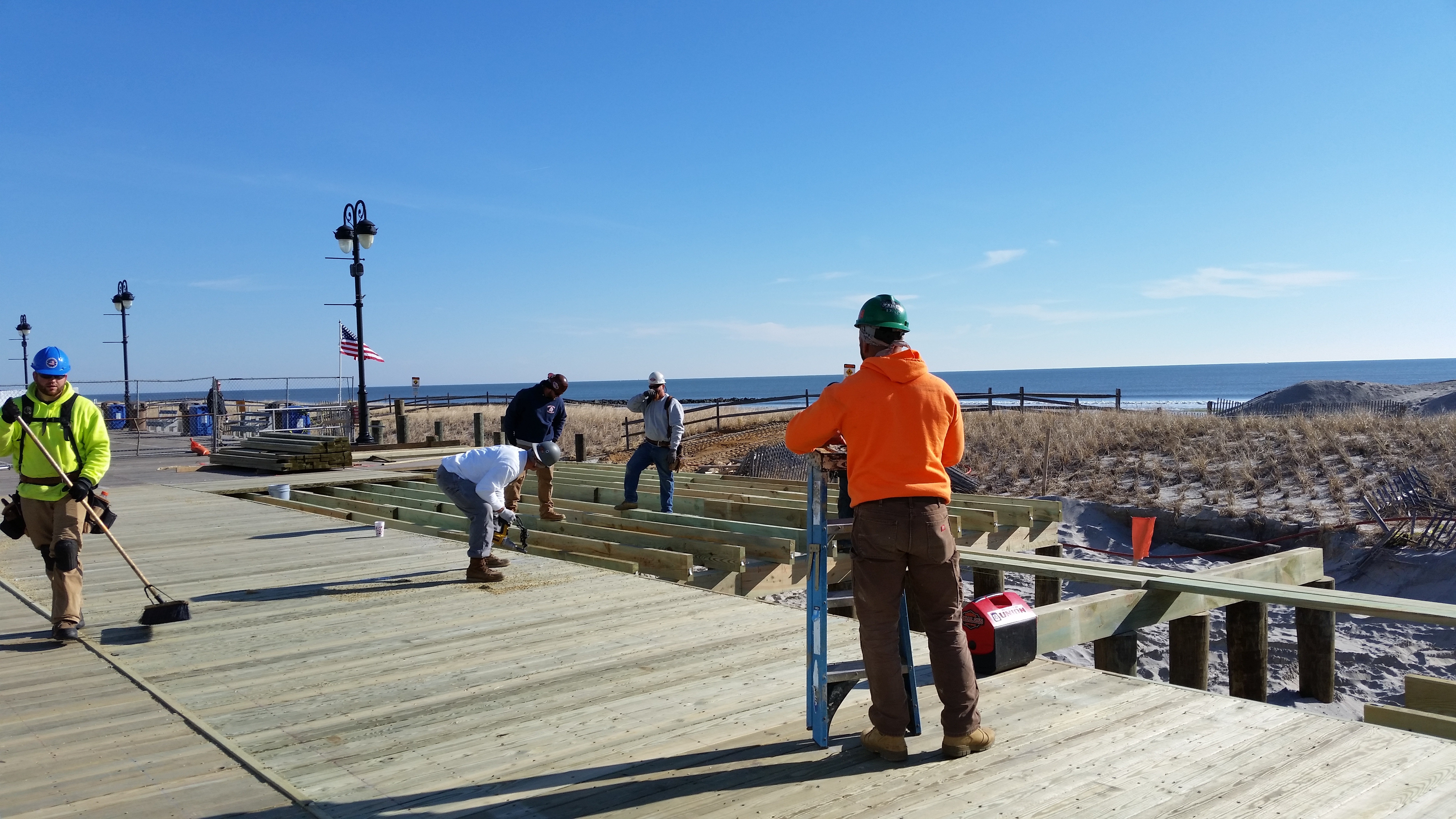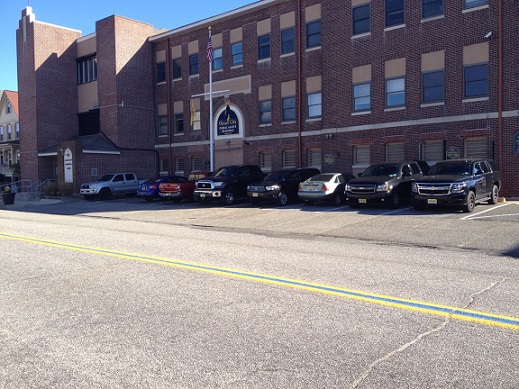By Donald Wittkowski
Mayor Jay Gillian proposed a $112.2 million, five-year capital plan Tuesday night that would pack a series of big-ticket projects in 2017, including an overhaul of the antiquated public safety building and the continuation of upgrades to the tourist-friendly Boardwalk.
Calling it a “bold” blueprint for the future, Gillian said the plan spreads out improvements across the entire town and addresses Ocean City’s critical infrastructure needs after years of neglect.
“The five-year capital plan you’re about to see dedicates more than $112 million to fixing up everything in the city – from flooded streets to shallow lagoons, from tip to tip, from Boardwalk to bay,” Gillian said in prepared remarks while unveiling his proposal to City Council during a budget workshop.
The mayor told Council that his plan reflects what he has heard over and over from local residents – that they want action and are “tired of waiting for somebody else to kick the can down the road.”
“They want their streets to drain. They want to be able to take their boats out. They want open space. They want to enjoy the beaches and Boardwalk and downtown. They want Ocean City’s exceptional services,” Gillian said.
The plan runs from 2017 to 2021 and represents a 14 percent increase over the five-year, $98.5 million capital program that Gillian proposed in 2016.
“It’s a lot of money,” Gillian said. “And I don’t make this recommendation lightly. But I’m confident that it’s a responsible plan.”

There is a financial cost for local property owners. On average, the capital plan would increase the local property tax rate by about a penny per year. On a home assessed at $500,000, that would mean about an extra $50 annually in local taxes, or $250 over five years.
“It’s going to come with a price, so we want to be honest with the taxpayers,” said Frank Donato, the city’s chief financial officer.
The biggest tax hit would be felt this year, because the plan proposes spending more money – nearly $52 million – in 2017 than in any other year.
“Much of the funding is front-loaded for 2017, and taxpayers may feel the greatest impact this year,” Gillian said. “Once we get through some of the major projects in the next year, the plan calls for trimming back – without losing a focus on roads and drainage.”
Donato explained that the tax rate would increase by about 2.5 cents to 3 cents in 2017, reflecting an extra $125 to $150 in property taxes on a home assessed at $500,000.
The capital plan is in response to local property owners who have urged the city to complete long-neglected projects in virtually every part of town, the mayor said.
“I hear from residents every day, and this plan delivers what they ask for,” he said.

City bonds backed by local tax revenue would finance a large portion of the capital plan. The plan also would depend on grants and a variety of state and federal funding.
Major improvements proposed for 2017 include a series of road and drainage projects in every ward of the city. Altogether, $10.4 million worth of paving and drainage upgrades are planned in 2017 to help reduce flooding, particularly during coastal storms.
Gillian said Monday’s powerful nor’easter, which unleashed widespread flooding along the Jersey Shore, illustrated the importance of Ocean City’s plan to improve its roadway and drainage network.
Continuing what he started in 2016, Gillian is once again placing a big emphasis on dredging projects to clear out the city’s sediment-choked lagoons and channels along the back bays. After setting aside $10 million for dredging projects in 2016, Gillian will follow up with $7.5 million for similar work this year.
Boat owners have repeatedly complained that they are often trapped at their docks or have to wait until high tide to navigate through the shallow lagoons and channels.
Similar to last year, the Boardwalk will be another major focus of the capital plan in 2017. In all, the Boardwalk would receive about $6.6 million in upgrades, including $4.7 million for its reconstruction from 10th to 12th streets. The Boardwalk’s reconstruction between 10th and 12th streets represents the final phase of a multiyear project to replace aging wooden planks with new timber from Fifth Street to 12th Street.
The single-most expensive project proposed in the capital plan for 2017 is a $17.5 million renovation and expansion of the public safety building, a century-old structure that houses the police department and municipal court. Gillian originally proposed tearing down the building and replacing it with an all-new public safety complex, but now considers the renovation plan the most cost-efficient option.
“This plan preserves a historic building while stabilizing and updating it,” the mayor said. “It does not eliminate parking from any other area of town. It does not require the purchase of any land or impact any other part of Ocean City. It does not entail any interruption of services during construction. And, again, it’s the most responsible way to do it.”

One local resident, Michael Hinchman, a former president of the government watchdog group Fairness In Taxes, questioned the renovation cost of the public safety building. He argued that the building really only needs a new roof and a heating, ventilation and air-conditioning system.
“I can’t get my head around that,” Hinchman said of the estimated $17.5 million price tag.
The first floor of the old building will be removed to comply with flood requirements by the Federal Emergency Management Agency. Gillian noted that much of the project’s construction cost will come from stabilizing the building once the first floor is removed.
Meanwhile, the capital plan will be scrutinized by Council for possible changes before it takes a vote, which is scheduled for Feb. 9.
Although Council members generally seemed receptive to the plan during Tuesday’s budget workshop, there were some questions about the impact on local taxes and whether more road projects could be done.
Councilman Michael DeVlieger, who represents the First Ward, urged Gillian to consider building more road projects for the north end of town and getting them in the pipeline sooner. DeVlieger said he receives more complaints from local residents about the roads than any other issue.
“I’d like to find a way of doing more,” DeVlieger said of the possibility of adding road projects in the First Ward.
Councilman Keith Hartzell asked Donato a series of questions about the capital plan’s tax implications. Donato told him that the increase in the local tax rate would average about a penny per year. Hartzell said he believed residents would ultimately support a tax increase to fund capital improvements.
However, Hartzell stressed that the public should not think the governing body will simply write “a blank check” to finance the capital plan. He said the proposal will be closely reviewed by Council before it takes a vote.
“I guess this will take a leap (of faith) from us and a lot of questions from taxpayers,” Hartzell said.






